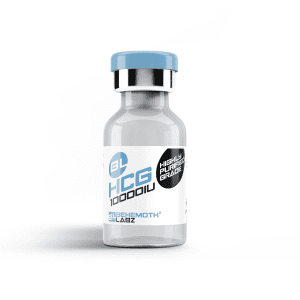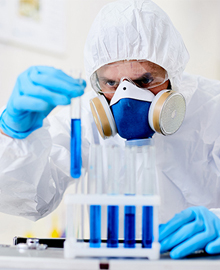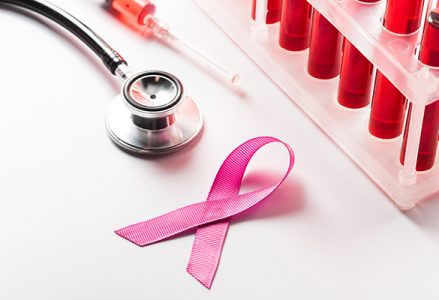Sarmscentral is a leading online retailer specializing in high-quality Selective Androgen Receptor Modulators (SARMs). Our mission is to provide athletes, bodybuilders, and fitness enthusiasts with the best possible products to help them achieve their goals.
HCG
Overview
Human Chorionic Gonadotropin (HCG) is a polypeptide hormone found in pregnant women during the early stages of pregnancy. The hormone is created in the placenta and is largely responsible for the continued production of progesterone, which itself is an essential hormone to pregnancy. The HCG hormone is also the standard measuring tool in pregnancy tests. Once conception occurs, HCG levels begin to increase and can be detected by a standard home pregnancy test. The hormone will then peak approximately 8-12 weeks into pregnancy and then gradually decrease until birth. When examining the functions and traits of HCG the only one of notable worth in both therapeutic or performance settings is in its ability to mimic the Luteinizing Hormone (LH). While perhaps slightly simplistic, HCG is exogenous LH, the primary gonadotropin along with Follicle Stimulating Hormone (FSH). This is beneficial to the female patient as such gonadotropins stimulate conception; LH is also the primary gonadotropin responsible for the stimulation of natural testosterone production. This is the precise reason some anabolic steroid users will use it and the primary reason it is used in many low testosterone treatment plans. When LH is released, it signals to the testicles to produce more testosterone, which is more than beneficial if natural LH production is low. HCG, while we can call it exogenous LH is not LH but rather mimics the hormone. This makes it beneficial to the steroid user post cycle as it will prime the body for the total Post Cycle Therapy (PCT) to come, which will normally include Selective Estrogen Receptor Modulators (SERM’s). While its functions do not change despite the purpose of use, as we look at the effects of HCG we will find, use needs to be regulated heavily.
Benefits
The effects of HCG on the anabolic steroid user can be broken down into two separate categories, PCT use and on cycle use. Due to the use of anabolic steroids, natural testosterone production is suppressed. The rate of suppression is dependent on the steroids being used and to a degree the total doses, but it is generally significant. Once the use of all anabolic steroids comes to an end, natural testosterone production will begin again on its own. However, this assumes there was no prior existing low testosterone condition or severe damage caused to the HPTA during anabolic steroid use due to improper practices. While production does begin again on its own, it is a very slow process. There will be a period of very low testosterone levels and often the symptoms associated with such a condition. Such symptoms cannot only be bothersome, but they often cause the steroid user to lose a lot of the muscle mass gained due to cortisol now becoming the dominant hormone in testosterone’s absence. For this reason most steroid users will implement a PCT plan in order to enhance recovery. This will speed up the recovery process. It will not return your levels to normal on its own, but it will ensure you have enough testosterone for proper bodily function while your levels continue to naturally rise.

Dosage
Note; dosage information is only for scientific reference purposes. SARMs Central, does not condone the human consumption or use of this substance outside of a controlled scientific environment (i.e. a lab).

There are several purposes of HCG use, and as a result, several HCG dosing protocols. For the purpose of ovarian stimulation (fertility aid) HCG is administered at a precise point during the menstrual cycle at a dose of 5,000-10,000iu’s.
Then we have the treatment of low testosterone, which can last anywhere from 6 weeks to a full year. Short-term plans will normally call for 500-1,000lu’s 3 times per week for 3 weeks followed by 500-1,000iu’s 2 times per week for 3 weeks. Long term HCG doses will normally fall in the 4,000iu range and are given 3 times per week for 6=9 months. This will normally be followed by 3 more months of therapy at a dose of 2,000 3 times per week.
Then we have the anabolic steroid user, specifically the steroid user using HCG while on cycle. For this purpose, an HCG dose of 250iu every 4-5 days is not only standard but as far as most will want to take it. This will be enough HCG to produce the desired outcome and should not be exceeded if future natural testosterone production is to be protected. The final HCG dosing plan will surround PCT use and there are two suitable protocols. The first method of use calls for 1,500-4,000iu’s to be administered every 3-4 days for a period of 2-3 weeks. Once this period of use comes to an end SERM therapy will begin again. A second option and perhaps more efficient is to administer HCG daily at a dose of 500-1,000iu’s per day for 10 days straight. Once this phase of use has come to an end SERM therapy will begin.
Potential Side Effects
HCG is one of the most side effect friendly hormones in existence. There are possible side effects of HCG use but they are extremely rare. Side effects commonly associated with traditional medicines such as gastrointestinal issues, headaches, rashes or other related occurrences are impossible. The primary possible side effects of HCG will be similar to the side effects most commonly associated with high levels of testosterone, predominantly those of an estrogenic nature. This isn’t surprising when we consider HCG has the ability to stimulate testosterone production and thereby increase levels. While unlikely, gynecomastia and excess water retention are possible due to HCG use. If the peptide is being used on cycle, such issues are rarely a concern as anti-estrogen medications are commonly being used. If used during a PCT plan, while HCG doses are normally high during this phase total use is typically very short lived and brings no issue of concern. As for other purposes of HCG use, total doses will be extremely low and should once again cause no concern. As you can see, when it comes to the side effects of HCG this is an extremely friendly hormone. However, keep in mind the issue of LH dependency that can occur due to abuse, and even in cases of no abuse such dependency may still be possible. If dependency occurs, this would result in a low testosterone condition.















